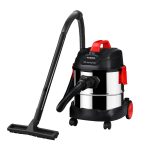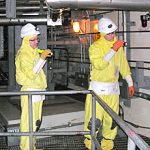Last Updated on March 13, 2024 by Nasir Hanif
In the fast-paced world of modern architecture, automatic doors have emerged as symbols of convenience and efficiency, revolutionising the way we navigate through public spaces. However, like any technology, automatic doors are not immune to occasional glitches and malfunctions. When these silent gatekeepers encounter issues, troubleshooting becomes a crucial task to restore their seamless functionality. From shopping malls to hospitals, train stations to office buildings, understanding the common troubleshooting steps for automatic doors is essential for maintaining the smooth flow of foot traffic and ensuring user safety.
One of the most common issues encountered with automatic doors is a failure to open or close as intended. When faced with this problem, the first step in troubleshooting is to check the power source. Automatic doors rely on a stable power supply to function correctly, and a power outage or electrical fault may disrupt their operation. Verifying the power connections, circuit breakers, and power sources can swiftly identify and rectify such issues.
Another frequent cause of malfunction is the obstruction of door sensors. Automatic doors are equipped with various sensors, such as infrared sensors or motion sensors, to detect the presence of individuals and open or close accordingly. Over time, these sensors may accumulate dust, debris, or dirt, affecting their accuracy. Regular cleaning and maintenance of the sensors can prevent false readings and ensure the automatic doors respond promptly to user presence. In some instances, the doors may exhibit a slow or delayed response, leading to inconvenience and potential safety hazards. Slow door movement can be attributed to issues with the door’s motor or the mechanism responsible for controlling its speed. Regular maintenance and lubrication of mechanical components can help address this issue. Additionally, verifying that the door’s control panel settings match the intended operation speed is crucial for troubleshooting slow door movement.
Automatic doors rely on a complex network of sensors and control systems to function optimally. Consequently, issues with the door’s control panel or control board can lead to malfunctions. In such cases, inspecting the control panel for loose connections, faulty wiring, or error codes can help pinpoint the root cause of the problem. If necessary, consulting with trained technicians or contacting the manufacturer’s support can aid in diagnosing and resolving control-related issues.
Safety is of paramount importance in public spaces, and automatic doors are designed with safety features to prevent accidents and collisions. However, if the door’s safety sensors are not functioning correctly, safety concerns may arise. Regular testing of the door’s safety sensors, such as presence sensors and obstruction sensors, is crucial to ensure their responsiveness. Additionally, adjusting the sensitivity of these sensors to the appropriate level can fine-tune their performance.
In cases where automatic doors fail to open during power outages or emergencies, the doors should have a fail-safe mechanism to allow manual operation. Familiarising users with the manual override system and ensuring it is in working order is a critical safety measure. Regular testing of the manual override ensures that occupants can evacuate or access the building during unforeseen circumstances.
When troubleshooting automatic doors, it is essential to maintain proper documentation of the maintenance and repair history. Keeping a comprehensive log of routine maintenance, repair procedures, and replacement parts can aid in identifying recurring issues and implementing preventive measures.
In conclusion, automatic doors have transformed modern architecture, enhancing accessibility and convenience in public spaces. While these technological marvels offer exceptional functionality, occasional troubleshooting is inevitable to ensure their smooth operation. By understanding and addressing common issues like power supply disruptions, sensor obstructions, and control panel problems, facility managers and technicians can swiftly restore the seamless functionality of automatic doors. Maintaining a vigilant approach to troubleshooting and regular maintenance contributes to a safer and more efficient experience for users, reaffirming the significance of these silent gatekeepers in the modern urban landscape. To find out more, you can visit Safetell Ltd.


























